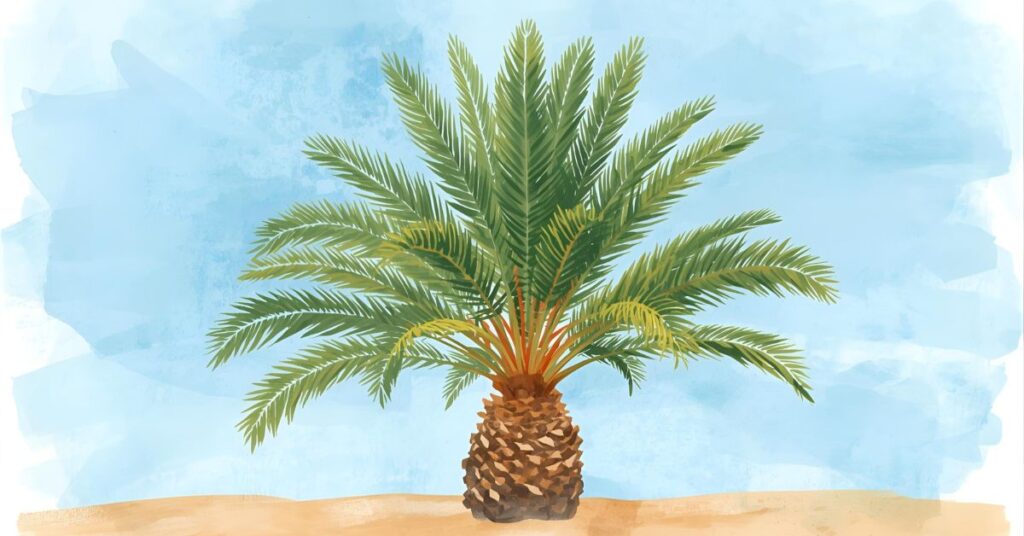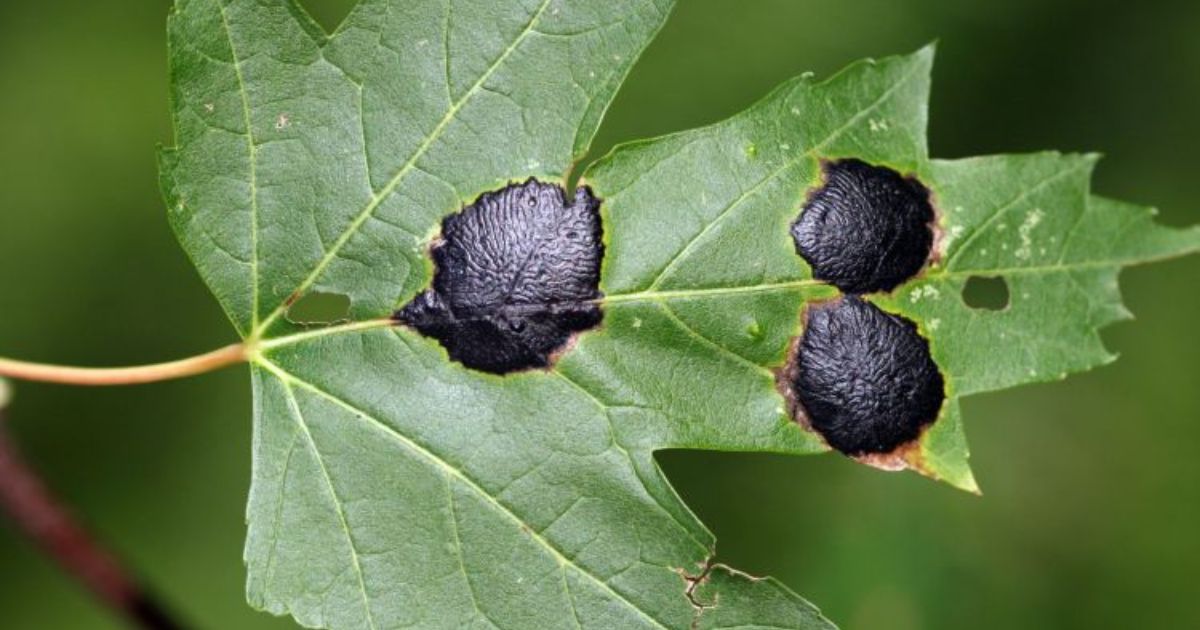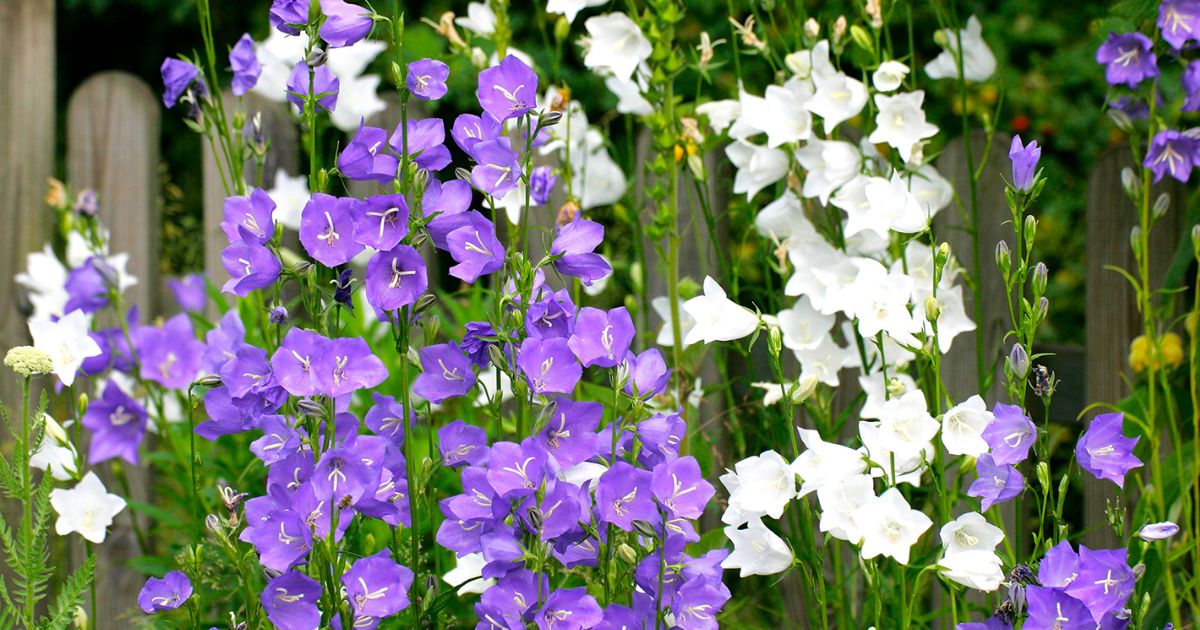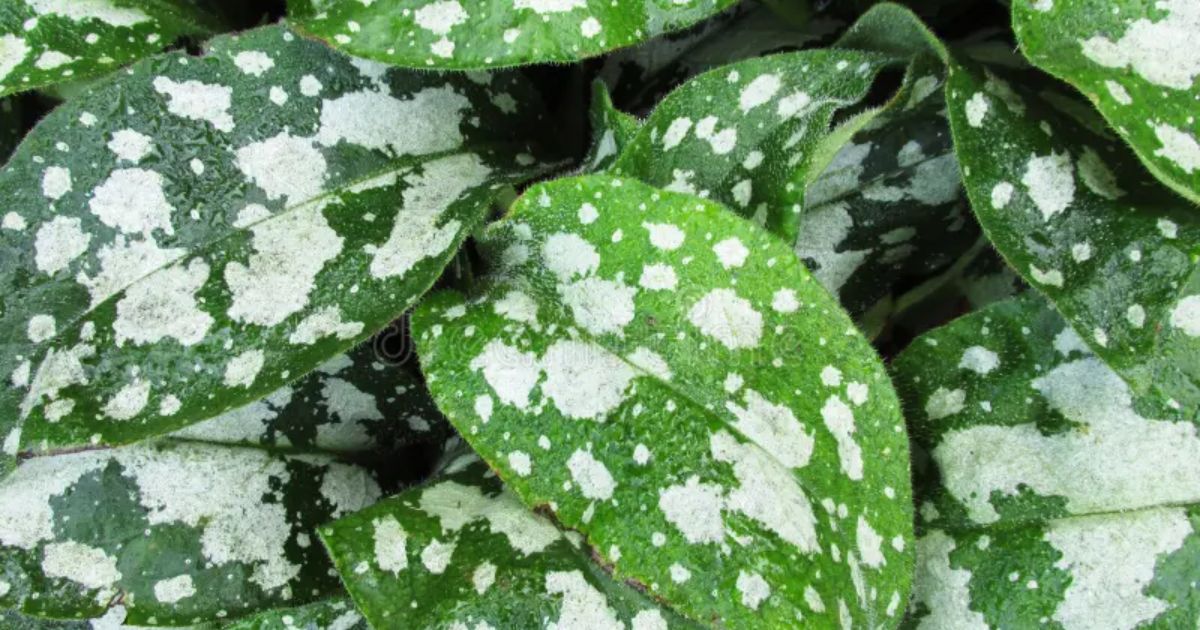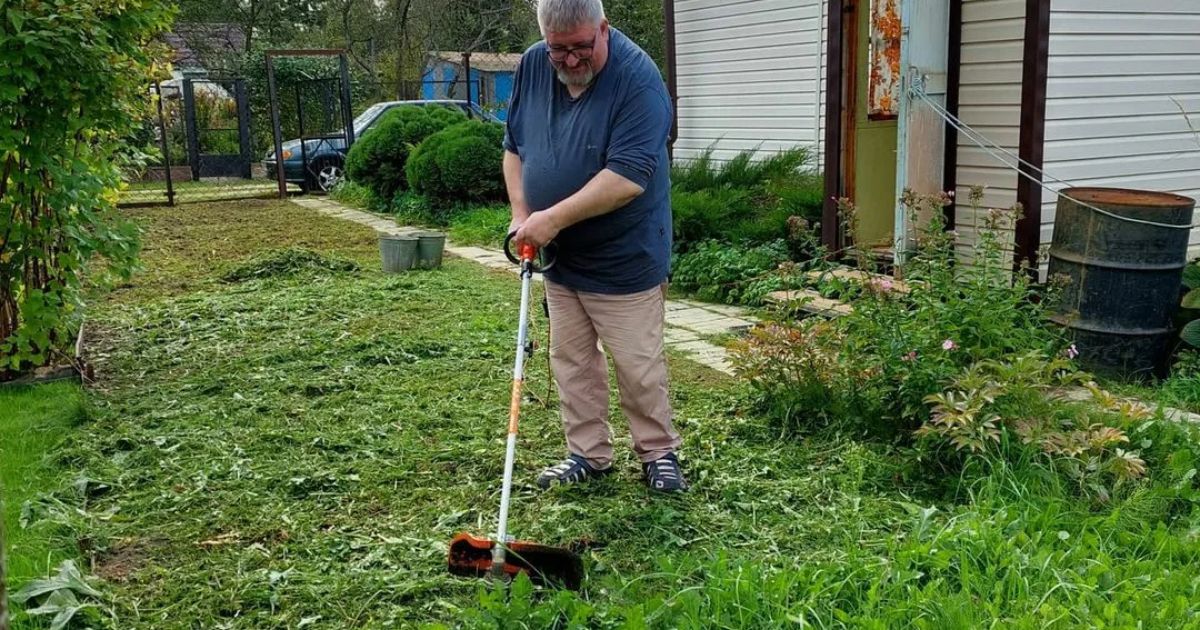The Canary Island Palm Tree (Phoenix canariensis) is one of the most striking and elegant palms you can add to your landscape. With its towering trunk and large, feathery fronds, it brings a dramatic, tropical touch to gardens, parks, and coastal areas. This palm is indigenous to the Canary Islands admired worldwide for its beauty and resilience, making it a favorite among landscapers and homeowners who want a statement tree.
In this Canary Island Palm Tree Care Guide: Tips for Healthy Growth, we’ll walk through everything you need to know to keep your palm thriving. From choosing the right planting spot to watering, fertilizing, pruning, and protecting it from pests, you’ll discover practical steps to ensure your palm grows healthy and majestic for years to come. Whether you’re planting a new specimen or maintaining a mature tree, these tips will help you create the perfect conditions for long-term success.
Understanding the Canary Island Palm Tree
The Canary Island Date Palm (Phoenix canariensis), often called palmera canaria phoenix canariensis, is a majestic palm recognized for its impressive size and tropical beauty. Mature trees can reach up to 60 feet tall, with wide, sturdy trunks that often feature a diamond-shaped pattern left behind by old fronds. The crown is equally striking, displaying long, feather-like fronds that can stretch up to 15–20 feet, giving the tree a lush and elegant silhouette.
Native to the Canary Islands, this palm thrives in a Mediterranean climate—hot, sunny summers and mild, moist winters. It is well-suited to coastal regions and areas with plenty of sunshine, which makes it a popular choice in resorts, public landscapes, and private gardens around the world.
In terms of growth, the Canary palm develops slowly but steadily, making it a long-term investment for those who plant it. With the right care, these palms can live for several decades, often becoming landmark trees in the spaces they occupy. Because of their large size and dramatic presence, they are best suited for expansive gardens, city parks, and avenue plantings, where they have enough room to fully display their grandeur without crowding nearby plants or structures.
If your tomatoes are still green, learn how to ripen tomatoes indoors to enjoy fresh, juicy fruit sooner.
Best Growing Conditions
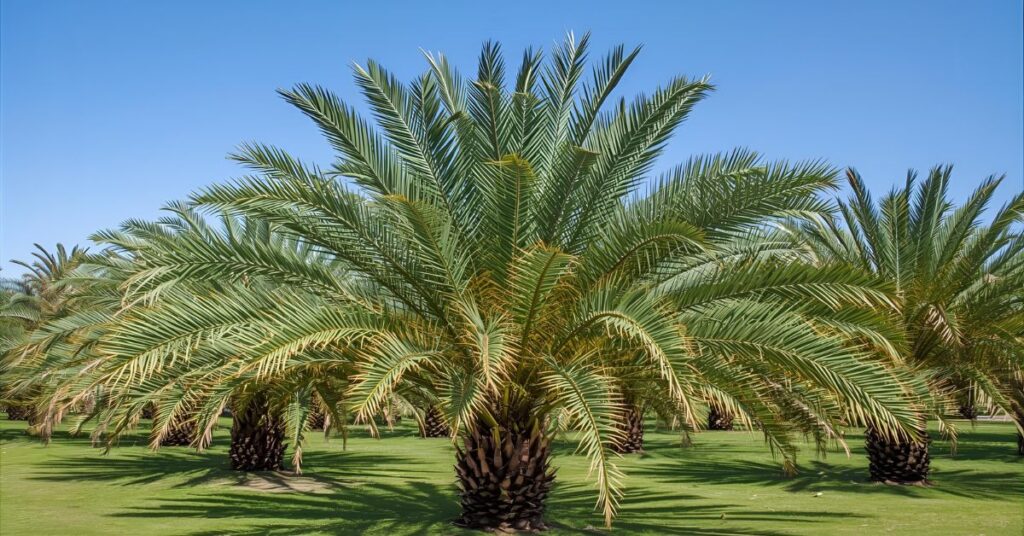
To thrive, the Phoenix canariensis Canary Island Date Palm requires the right balance of sunlight, soil, and climate. Understanding these growing needs will ensure healthy growth and help your palm reach its full potential.
Sunlight: The Canary palm sunlight requirement is simple—it loves full sun. Planting it in an open space with direct light for most of the day encourages strong trunk development and lush, green fronds. It will not grow as quickly in partial shade, but it can thrive there.
Soil Requirements: The best soil for Canary Island palm is sandy or loamy with good drainage. Overly water-retaining heavy clay soils can lead to root rot. The optimal pH range is slightly acidic to neutral, and adding organic matter or mulch can improve soil health while keeping moisture consistent around the root zone.
Temperature & Climate: When it comes to Canary palm growing conditions, this palm does best in warm, subtropical to Mediterranean climates. It is hardy in USDA zones 9–11, where winters are mild and summers are hot. While mature palms can tolerate a touch of frost, damage might result from prolonged exposure to frigid temperatures frondsand slow growth.
By providing the right sunlight, soil, and climate, your Canary Island Date Palm will not only grow steadily but also maintain its signature beauty for decades.
How to Plant a Canary Island Palm Tree
Successful growth begins with proper planting, and the Phoenix palm plants are no exception. Following the right steps ensures your palm establishes strong roots and flourishes in its new environment.
Choosing the Right Location: Before planting a Canary Island palm, select a spot with plenty of space. These trees develop wide canopies and deep root systems, so avoid planting too close to buildings, sidewalks, or other large trees. Open, sunny areas are ideal.
Planting Hole Size and Depth: Create a hole that is precisely the same depth and twice as large as the root ball. This gives roots room to spread while ensuring the palm sits at the same soil level it was growing in at the nursery. Planting too deep can stress the tree and slow growth.
Backfilling with Soil Mix and Initial Watering: Refill the hole using a mix of the excavated soil and organic compost to encourage nutrient-rich growth. Tamp the dirt gently to eliminate any air pockets and water thoroughly after planting. This first deep watering helps settle the soil around the roots.
Mulching for Moisture Retention: Keep the palm a few inches from the trunk and cover the base with a 2–3 inch layer of mulch. Mulch lowers weed competition, controls temperature, and helps hold onto soil moisture.
By following these Canary Island palm tree tips, you’ll give your palm the best possible start, setting it up for strong and healthy development.
Watering Requirements
Proper watering is one of the most important aspects of Canary Island Palm Tree care. Getting it right ensures healthy root development and prevents stress-related problems.
Young Palms: Newly planted or young Canarian palm trees need frequent deep watering to establish strong roots. Aim to water 2–3 times per week during the first year, ensuring moisture penetrates several inches into the soil. Consistency is key during this stage.
Mature Palms: Once established, the Canary palm becomes relatively drought-tolerant. However, it still benefits from occasional deep watering, especially during hot, dry spells. A deep soak every couple of weeks in summer helps maintain lush, green fronds.
Avoid Waterlogging: Overwatering can be just as harmful as neglect. Roots sitting in soggy soil are prone to rot, which can weaken or kill the palm. Always check that the soil drains well before watering again.
Signs of Underwatering vs. Overwatering:
- Underwatering: drooping or brown-tipped fronds, dry soil around the root zone.
- Overwatering: yellowing fronds, soft or mushy roots, soil that feels consistently wet.
By adjusting your approach to watering Canary palms based on age, climate, and soil conditions, you’ll keep your palm thriving while avoiding common mistakes.
Fertilizing Your Palm
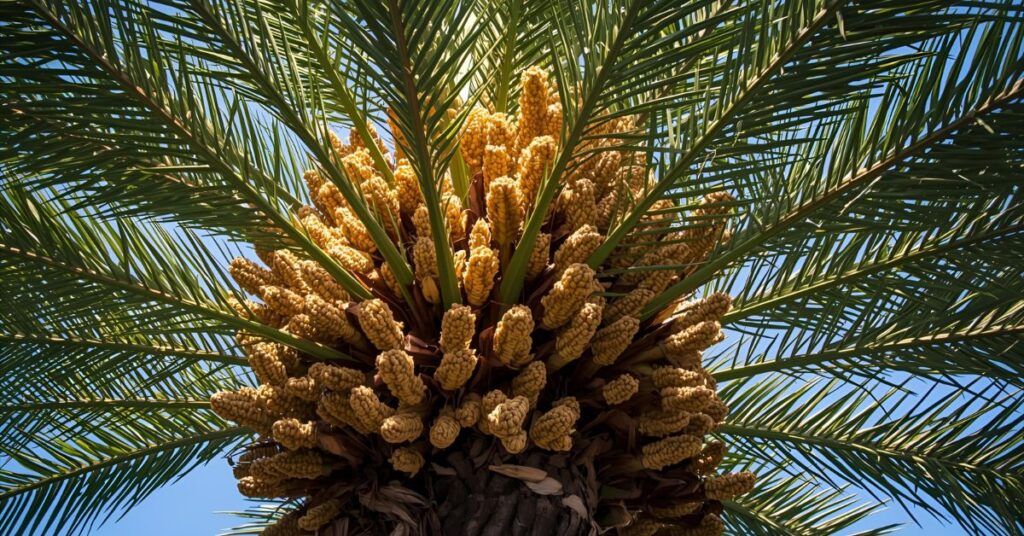
A healthy feeding routine is essential for strong Canary palm nutrition and long-lasting growth. Because the Canary Island palm–date (Phoenix canariensis) is a large tree with heavy nutrient demands, the right fertilizer makes all the difference.
Best Fertilizer: Choose a slow-release, palm-specific fertilizer that contains balanced amounts of potassium, magnesium, and manganese. These nutrients support strong trunk development, lush green fronds, and resistance to common deficiencies. General-purpose fertilizers often lack the trace minerals palms need, so opt for blends made specifically for palms.
Feeding Schedule: The best fertilizer for Canary Island palm should be applied during the active growing seasons of spring and summer. Fertilize every 2–3 months, following the manufacturer’s instructions for dosage based on the size of your tree. Steer clear of fertilizing throughout the fall and winter when the palm’s growth naturally slows down.
Deficiency Signs: If your palm isn’t getting the right nutrition, it will show visible symptoms. Yellowing or frizzled fronds may indicate potassium or magnesium deficiency, while weak or stunted growth often points to a lack of manganese. Catching these early allows you to adjust feeding before long-term damage occurs.
By maintaining a regular routine and utilizing a nutrient-rich, palm-specific formula, you’ll provide your Canary Island Date Palm with the foundation it needs to stay vibrant and healthy for decades.
If you want to save money and reduce waste, check out our guide on how to keep onions from spoiling.
Pruning and Maintenance
Proper palm tree maintenance keeps your Canary palm tree looking healthy and elegant without causing unnecessary stress to the plant. While it’s tempting to trim often for a neat appearance, the key is knowing when and how much to prune.
Only Prune Dead or Damaged Fronds: The most important rule for pruning Canary Island palm is to remove only brown, broken, or diseased fronds. Green fronds still provide energy through photosynthesis, and cutting them prematurely can weaken the tree. Over-pruning may also expose the palm to pests and reduce its natural beauty.
Tools for Safe Pruning: Use sharp, clean pruning shears or a hand saw for smaller fronds. For tall, mature trees, a pole saw may be necessary. Always use gloves and safety glasses, as the fronds are stiff and spiny. Disinfect tools before and after use to prevent spreading diseases between cuts.
Shape and Aesthetics: When trimmed correctly, the Canary Island palm maintains a graceful, rounded crown with feather-like fronds radiating outward. Avoid cutting fronds that grow above the horizontal line of the crown, as this can create an unnatural look and disrupt the tree’s balance.
By following these simple Canary palm tree maintenance steps, you’ll preserve both the health and striking appearance of your palm for years to come.
Common Pests and Diseases
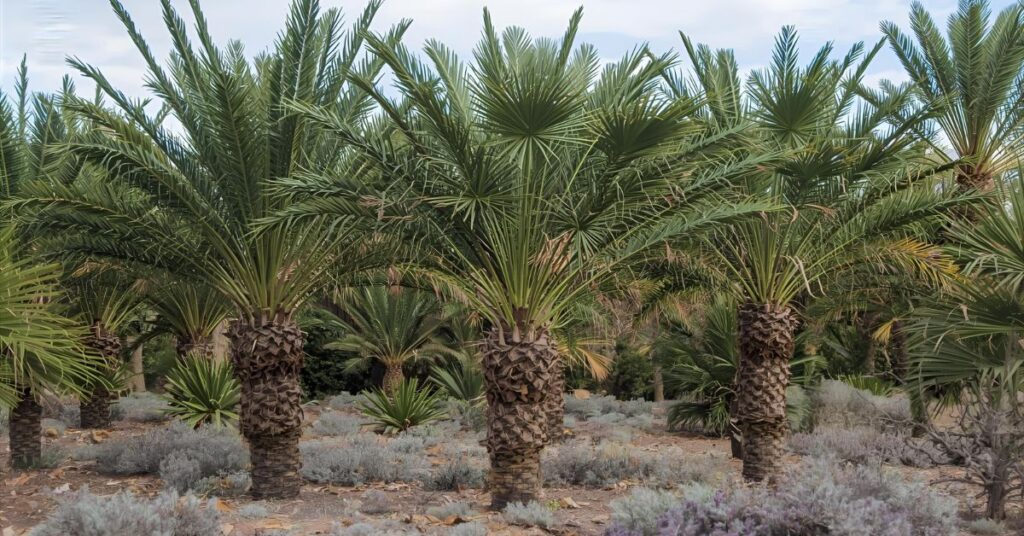
Like all large landscape trees, the Canary palm can face challenges from insects and diseases if not cared for properly. Being aware of the most common palm tree problems helps you take quick action before serious damage occurs.
Pests:
- Palm Weevils: Among the most destructive Canary Island palm pests, palm weevils burrow into the trunk and crown, weakening the tree from the inside. Infestations often go unnoticed until fronds start collapsing.
- Scale Insects: These tiny, sap-sucking pests attach to fronds and stems, leaving behind sticky residue and causing yellowing leaves.
- Spider Mites: Especially active in hot, dry weather, spider mites feed on fronds, creating speckled discoloration and reducing vigor.
Diseases:
- Fusarium Wilt: One of the most serious Canary Island palm diseases, Fusarium wilt is a fungal infection that causes fronds to yellow, brown, and eventually die, often starting on one side of the canopy.
- Bud Rot: Caused by fungi or bacteria, bud rot attacks the growing tip of the palm, leading to blackened, mushy tissue and stunted new growth.
Prevention and Treatment Options:
- Regularly inspect fronds and trunks for early signs of pests or disease.
- Use systemic insecticides or horticultural oils to manage scale and mites.
- Remove and safely dispose of affected fronds to slow the spread of fungal diseases.
- Avoid overwatering, since excess moisture can encourage rot.
- For severe infections like Fusarium wilt, removal of the infected palm may be the only option to protect surrounding trees.
Staying alert to these potential threats ensures your Canary palm remains healthy, beautiful, and a lasting feature in your landscape.
Winter and Frost Protection
While hardy in warm regions, Canary Island palm cold tolerance is limited, and these palms can suffer damage when exposed to extended freezing temperatures. Protecting your palm during winter is essential if you live in a cooler climate.
Tips for Colder Climates: To keep the soil warm and insulate the roots, cover the tree’s base with a heavy layer of mulch. During frost warnings, cover the crown and fronds with frost blankets or burlap to shield them from icy winds. For younger palms, wrapping the trunk can also provide extra protection.
Indoor Container Growth: For gardeners in regions with harsh winters, growing smaller Canary palms in large containers is a practical solution. These can be kept outdoors during the warm months and moved indoors or into a greenhouse when temperatures drop. The container should be placed under grow lights or in a sunny window to keep the palm healthy through the cold season.
With proper winter care for Canary palms, you can safeguard your tree from frost damage and ensure it thrives year after year, even outside its native Mediterranean climate.
Landscaping Uses and Aesthetic Value
The Canary Island palm is not only admired for its impressive size and feathery fronds but also for its versatility in Canary Island palm landscaping. Its striking silhouette and tropical appeal make it an excellent focal point in a variety of settings.
Ideal Locations: This palm is perfect for driveways, where its majestic trunk frames entrances with elegance. It also enhances large gardens, resorts, and coastal landscapes, adding vertical interest and a sense of grandeur. Its durability and low-maintenance nature make it a popular choice in both private and public spaces.
Companion Plants: Pairing the Canary palm tree design with drought-tolerant shrubs, succulents, or tropical groundcovers can enhance visual appeal while respecting the palm’s water and sunlight needs. Low-growing plants around the base also help create a layered, lush landscape without competing with the palm for resources.
Whether used as a solitary statement tree or in a carefully designed garden layout, the Canary Island palm elevates any landscape with its timeless elegance and tropical charm.
Conclusion
Caring for a Canary Island Palm Tree involves understanding its unique needs for sunlight, well-draining soil, proper watering, balanced fertilizing, careful pruning, and vigilant pest control. By paying attention to each of these factors, you create the ideal environment for your palm to grow strong and healthy.
Long-term care is essential to maintain the palm’s majestic appearance and ensure it remains a striking feature in your landscape for years to come. With consistent attention and proper maintenance, your tree will reward you with lush, feathery fronds and a commanding presence.
With the right care, your Canary Island Palm Tree can thrive for decades and transform your landscape into a tropical paradise.
FAQs:
1. How fast do Canary Island palm trees grow?
Canary Island palms are slow-growing, typically adding 12–24 inches per year under ideal conditions. Patience is key, as these palms reach their full majestic size over several decades.
2. How tall does a Canary Island date palm get?
Mature Canary Island date palms (Phoenix canariensis) can reach heights of 40–60 feet, with a wide, spreading crown of feather-like fronds. They are ideal for large gardens, parks, and avenues where their full grandeur can be appreciated.
3. Are Canary Island palms messy?
Like most palms, they do shed old fronds and seed pods. Regular pruning of dead or damaged fronds minimizes debris and keeps the area tidy. Mulching around the base also helps manage fallen material.
4. Do Canary Island palms need much water?
Young palms require frequent deep watering to establish strong roots, while mature palms are drought-tolerant but benefit from sporadic deep watering when it’s hot and dry. Avoid overwatering to prevent root rot.
5. Can Canary palms survive frost?
Canary Island palm cold tolerance is limited. Mature palms can withstand light frost, but prolonged freezing temperatures can damage fronds or the crown. Use mulch, frost blankets, or container growth for protection in colder climates.

